Rendering of Few Gardens, 04.23.52 (Courtesy Herald Sun via Dana Few Pope)
Initial grading work at Few Gardens, 04.23.52 (Courtesy Herald Sun via Dana Few Pope)
The genesis of Few Gardens was enabled by the Federal Housing Act of 1949, which created three Federally funded programs:
Title I: Federal funding for "slum clearance" in American cities, which would come to be known as "Urban Renewal" by the Housing Act of 1954.
Title II: Liberalization of the standards for FHA-backed mortgages.
Title III: Federal Funding to build 800,000 public housing units.
While Title II was fairly innocuous, TItle I and and Title III - policies created through attempted compromise between strong advocates of government=funded housing and strong private sector real estate interests - would lead to a cycle of destruction and despair in Durham from which we still haven't recovered.
The construction of Few Gardens as Durham's first housing project in 1952-53, on vacant land east of Morning Glory and west of East Durham, began a cycle that would change the face of the community.
Bird's Eye view looking northwest from ~Driver Street. The vacant land separating East Durham from the Morning Glory mill village shows the historic separation between the communities which would be infilled by the housing project.
Below in italics from the Durham Sun, 11.13.50:
Big Housing To Be Named Few Gardens: 200-Unit Project Will Honor Duke's
Former President
The 200-unit white housing project to be located in East Durham will be named Few Gardens in honor of the late Dr. W. P. Few, former president of Duke University.
The announcement of the project's title was made this morning by Leroy Addington, director of the Durham Housing Authority.
Addington said Few Gardens would be so named as a tribute of recognition to the Duke president, "in commemoration of his services to the ccommunity and the South." "The project," Addington said, "will serve to perpetuate a beloved and well-known name among Duke Educators."
In response to a letter from the local Housing Authority informing Mrs. Few of the tribute to be paid her husband, the late educator's wife replied: “That the Housing Authority should be the first to commemorate Dr. Few here touches and pleases me more than I can say. "It is particularly fitting that this housing project be named for him, as he devoted his life and fine abilities to the development of this city and his beloved Southland. The recognition you accord him will give my sons and me great satisfaction."
The location of the project was ' announced last week-by Addington It consists of two land tracts comprising 22 acres which the city has been granted an option for purchase at $41,200.
The option, granted by Golden Belt Manufacturing Company, includes six houses located on the property.
The larger of the tracts is bounded by Holman Street, Morning Glory Avenue and Taylor Street, while the smaller is bounded by Taylor Street, Alston Avenue and the Golden Belt property line.
Two weeks ago a 200-unit project for Negroes was announced with a location in the College View section. Addington said today that no name has been chosen for that portion the local housing program.
In italics below from the Durham Sun: 04.04.52
725 Attend Few Gardens Ground-Breaking Program
Approximately 125 persons attended formal ground-breaking exercises for Durham's first public housing project 'here yesterday afternoon. The simple, impressive rites were conducted -on the Holman Street side of the project site as bulldozers there to do grading work, idled their motors on the far side of the area.
William Muirhead, chairman of the Durham Housing Authority, described the history of the Few Gardens project from the date the Authority was appointed by former mayor Dan K. Edwards in October, 1949.
He added that he hopes to see the entire project completed Within, 15 months. It will include 240 low-rent apartments to be occupied by local families with small incomes.
Muirhead also stated that plans for the local Negro project, to be known as McDougald Terrace, should go to Richmond, Va., for approval "within 10 days," and said' he hopes to see that project started this spring. That unit will be erected in the College View Section.
Following Muirhead's opening remarks ' yesterday, Mayor E. J Evans paid' tribute to the late W. P. Few, former president of Duke University in whose honor Few Gardens is named, and Mrs. Few, widow of the honoree, commented: "My sons and I regard this as a beautiful memorial to their father, and we are deeply grateful to you for it."
With that remark and the turning of a spade of dirt by Muirhead, Mayor Evans, and several others, the formal ceremony ended and the idled bulldozers nearby resumed their ground-leveling work.
The initial inhabitants of the new public housing in Durham (Few Gardens, a 'White project' was closely followed in 1954 by McDougald Terrace, a 'Black project') and most cities were the marginalized working class - low-paid factory workers who could no longer afford housing or could not find housing near their work. Thus many of the initial inhabitants of Few Gardens were substantially similar in their economic (mis)fortune to their immediate neighbors in Edgemont and Morning Glory. The same held true in McDougald Terrace.
The Garden CIty-style new public housing was widely praised by new residents - many who had lived in tenement-like conditions in early 20th-century housing badly neglected by landlords.
Few Gardens, looking west soon after construction.
Landscaping Few Gardens, 07.22.53
Aerial view of Few Gardens and surrounding neighborhood, 1959.
Few Gardens, mid 1950s (Photo by Ran Few, via Dana Few Pope)
Few Gardens, mid 1950s (Photo by Ran Few, via Dana Few Pope)
Few Gardens, mid 1950s (Photo by Ran Few, via Dana Few Pope)
Few Gardens, mid 1950s (Photo by Ran Few, via Dana Few Pope)
The path of Few Gardens was soon to change, however, with the implementation of Title I, or 'urban renewal'.
In Durham, huge swaths of land were cleared between ~South Elm on the east, Duke Street on the West, the NCRR tracks on the north, and Piedmont Avenue to the south. In addition, approximately a 1/3 of the buildings between Elizabeth St. and the Liggett factory in the core of downtown were demolished.
The Federal government had made it a priority to house these displaced residents - by providing them priority placement in public housing.
In Durham, this meant that suddenly displaced and homeless people, from the most deeply impoverished parts of Durham, suddenly flooded into public housing, and the working class families that had predominated previously moved out and onward.
Combined with the disruption of social ties that had previously existed with the neighborhood, the deeply concentrated poverty became an incubator for crime and other social ills.
Few Gardens, 01.18.67
Few Gardens, 01.18.67
When Congress created the HOPE VI program in August 1992, it was designed to address the problem of poor living conditions created by the combination of Title I and Title III of the Housing Act of 1949 - by demolishing the fashionable-at-the-time barracks-style housing and high-rise projects and replacing them with neo traditional neighborhood design that would be mixed income and combine rental and ownership.
Per the Durham HOPE VI website:
"The Housing Authority of the City of Durham (DHA), with assistance from The Community Builders, Inc. (TCB), applied for HOPE VI funding and was awarded a HOPE VI Revitalization Grant in the amount of $35,000,000. DHA and TCB anticipate leveraging an additional $120,000,000 from public and private sources to support the revitalization of the Few Gardens public housing site and the strengthening of the surrounding community. The new housing will be well designed and will include a range of rental housing and homeownership opportunities. DHA is implementing the Few Gardens HOPE VI revitalization effort in partnership with TCB."
The ambitious HOPE VI project got underway in ~2000. Demolition of Few Gardens occurred in 2003.
Resident digging up her Canna Lilly, 07.24.03
The Durham Housing Authority and TCB built rental units on a portion of the former Few Gardens Site, as well as townhomes along East Main St. The project however, has stalled at that point, well short of the ambition outlined in the Hope VI revitalization plan.
Holman and Morning Glory, looking northeast, 11.28.10
Holman and Taylor, looking southeast, 11.28.10
As former director Harrison Shannon said to me (and I held my jaw from hitting the table) before he moved/was moved on "I just regret that we weren't able to do the homeownership or the mixed-income units." In other words, the major raison d'etre of the HOPE VI program; DHA managed to build new plastic neo-traditional low-income duplexes to replace the Few Gardens project, but did not manage to build the key elements to create a stable socioeconomic community. Land upon which many of these units were supposed to be built - on the Few Gardens site and along Angier Ave. - remains persistently vacant.
Vacant 1/2 of the former Few Gardens site.
The primary difficulty with Housing Authorities, I've learned, is that they are accountable to no one, which is why they are, nationally, founts of malfeasance and ineptitude. Odd structures, they are 'local' agencies that have no local accountability except for an unelected board made up of local individuals. In Durham, our Housing Authority answers not to the city council or the county commissioners - or even the state government - but to the Greensboro office of the Dept. of Housing and Urban Development (HUD,) a Federal agency. As best I can tell, the folks in Greensboro are a combination of incredibly overworked and beleaguered well-intended individuals and a bevy of people who simply don't give a damn.
What a squandered opportunity - while the housing on the former Few Gardens site above is mediocre construction, the infill townhomes on East Main St. are a cut above that, and an asset to the neighborhood. I can only imagine how far the $35 million could have gone. As it is, what we have is mostly an improvement on what was in the neighborhood - it simply could have been, and was supposed to be, so much more.
Find this spot on a Google Map.
35.988308,-78.885098

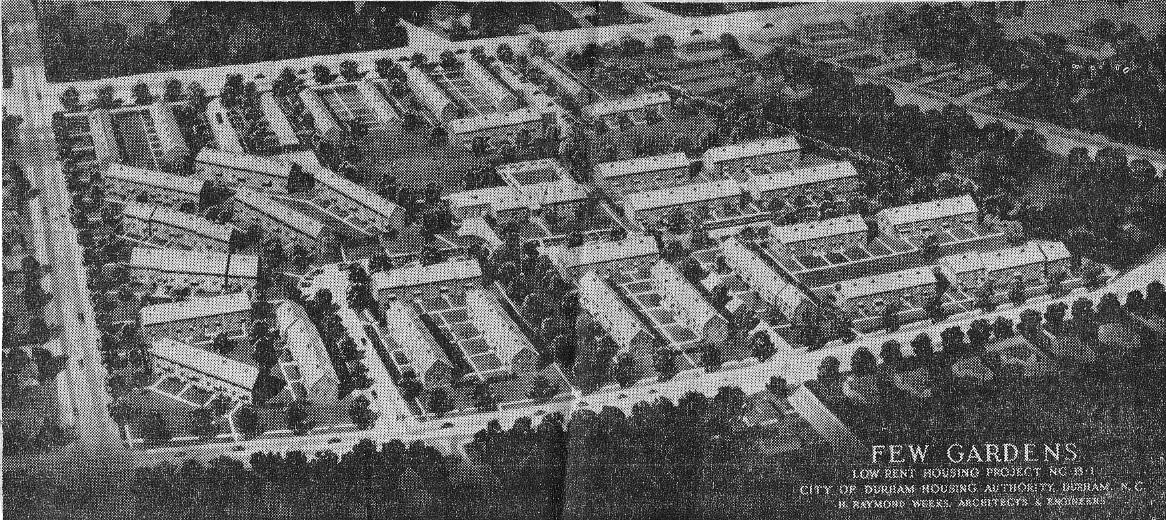
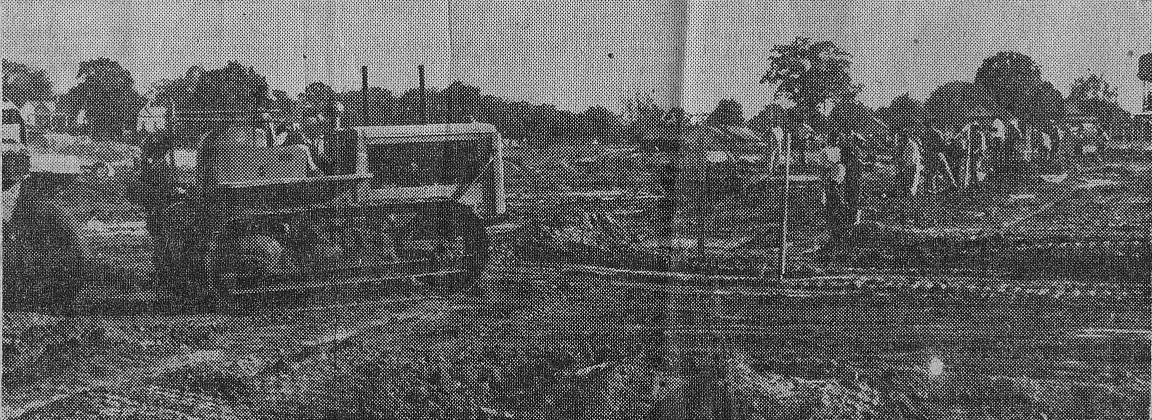
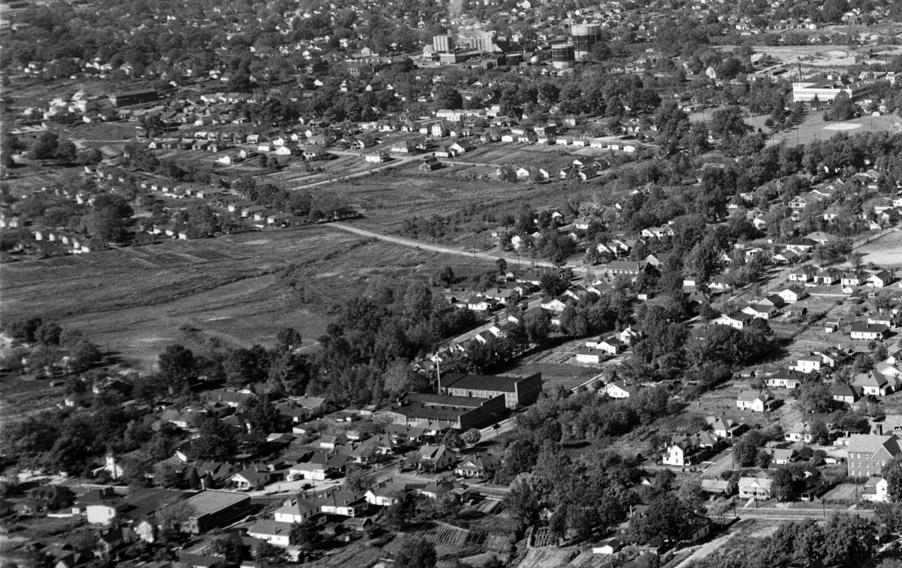
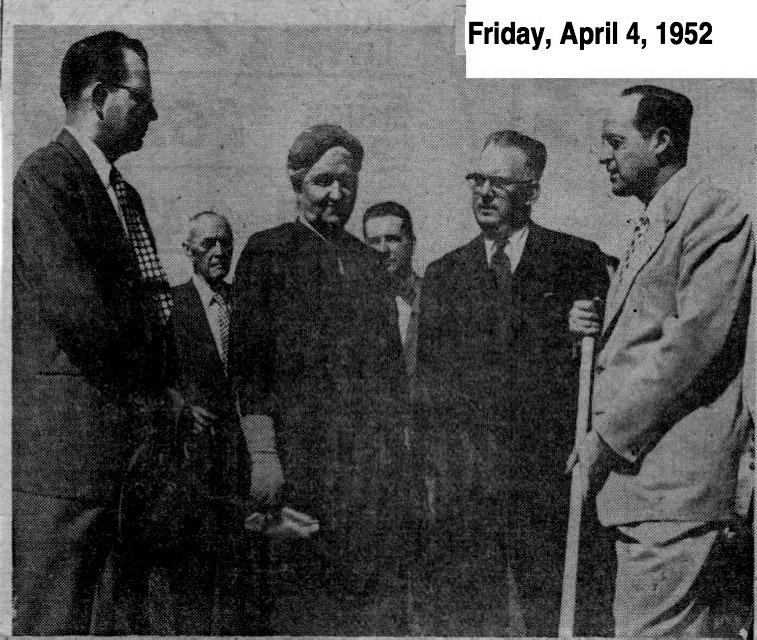
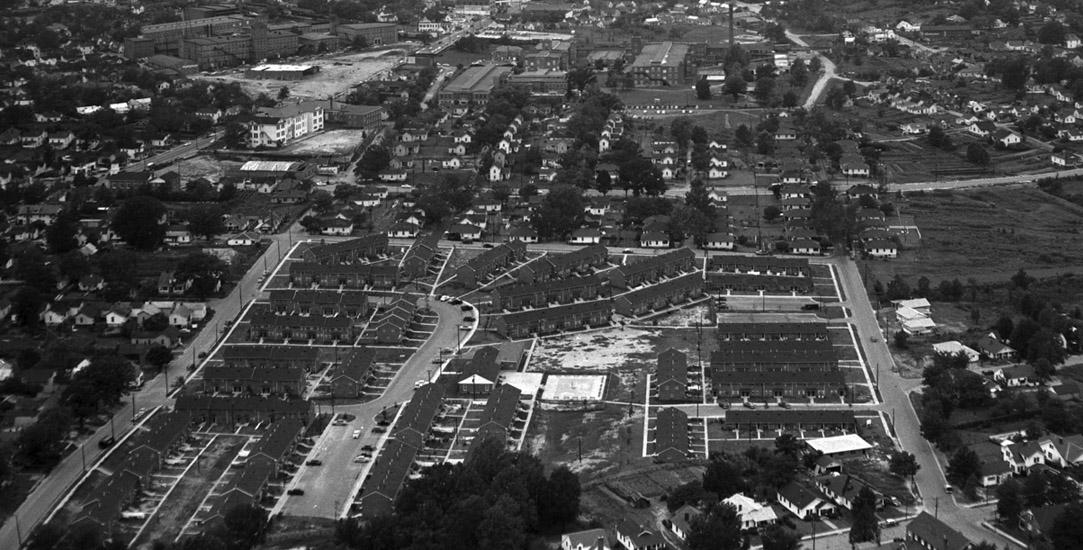
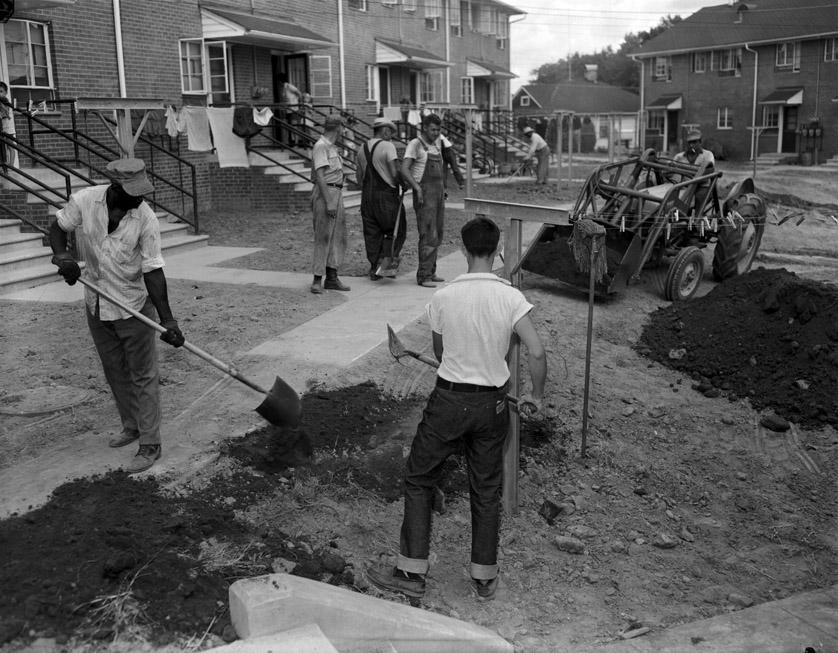
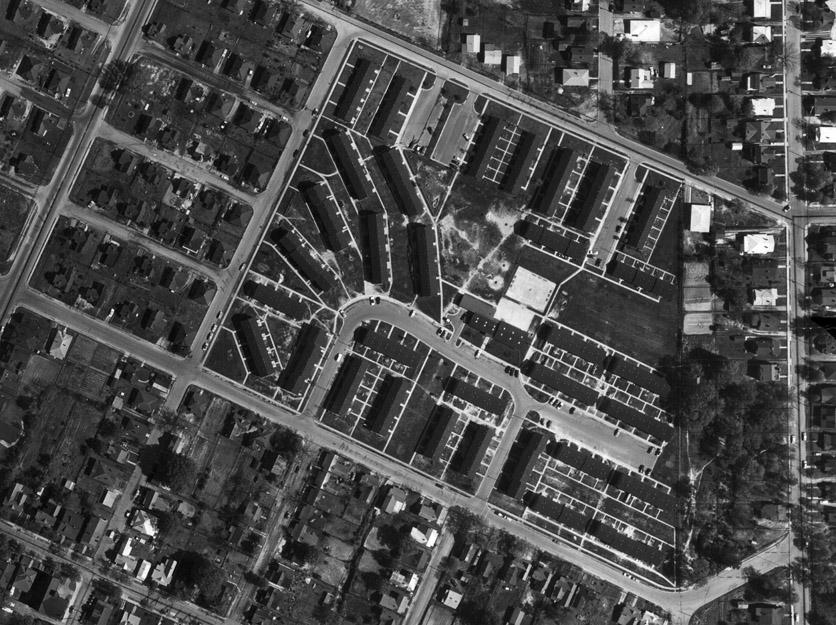
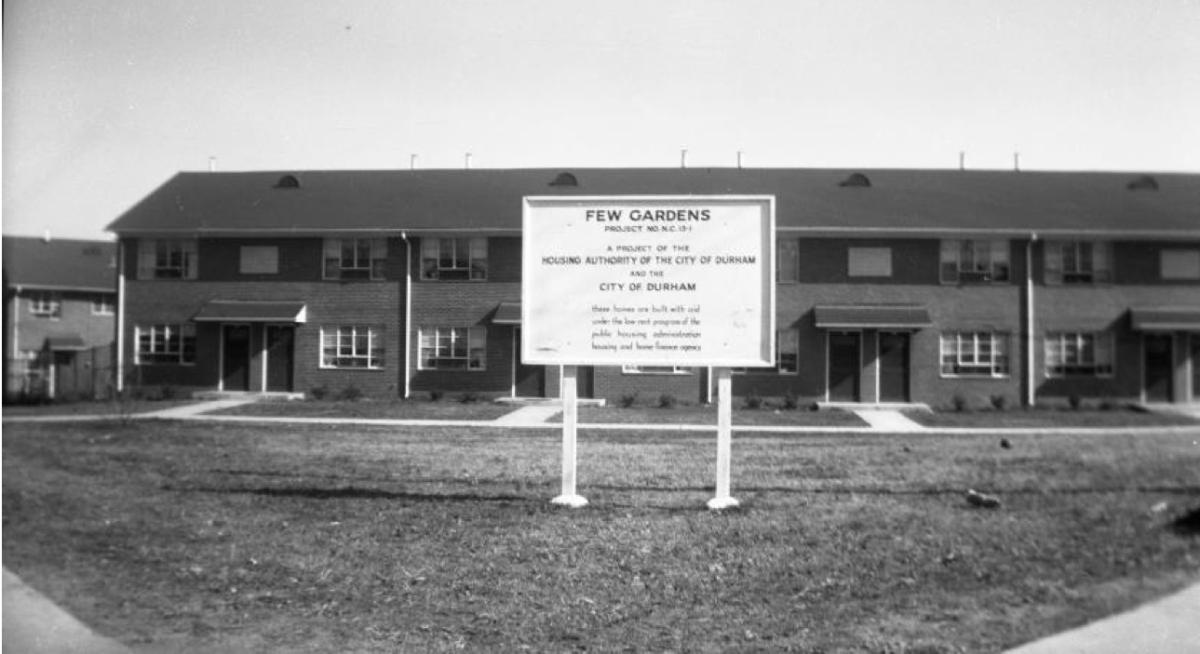
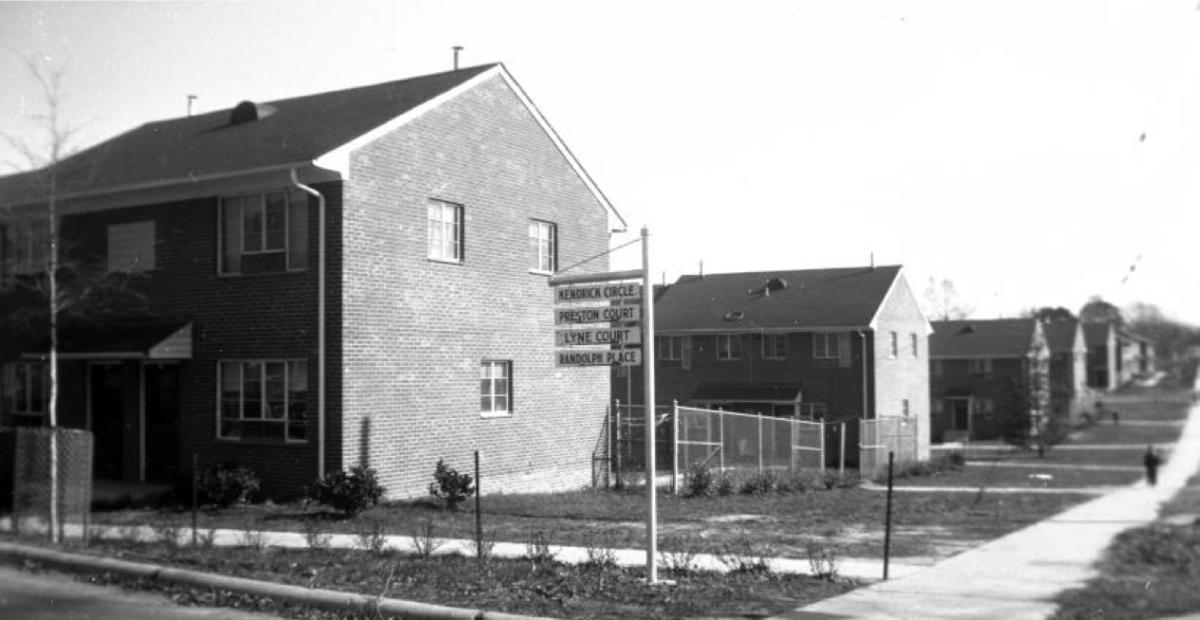
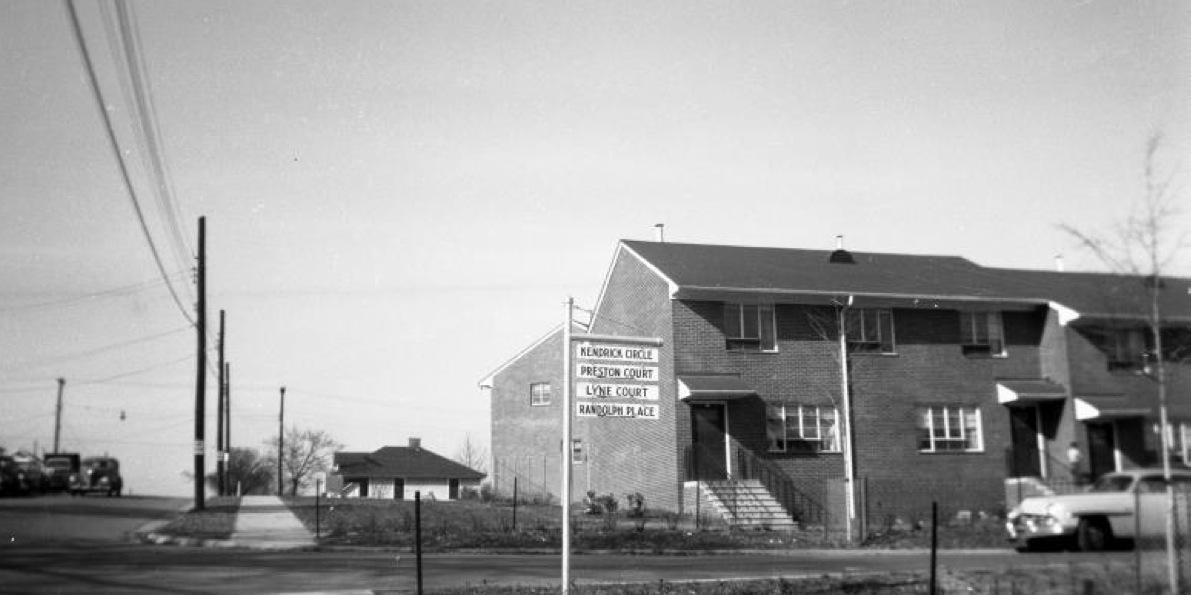
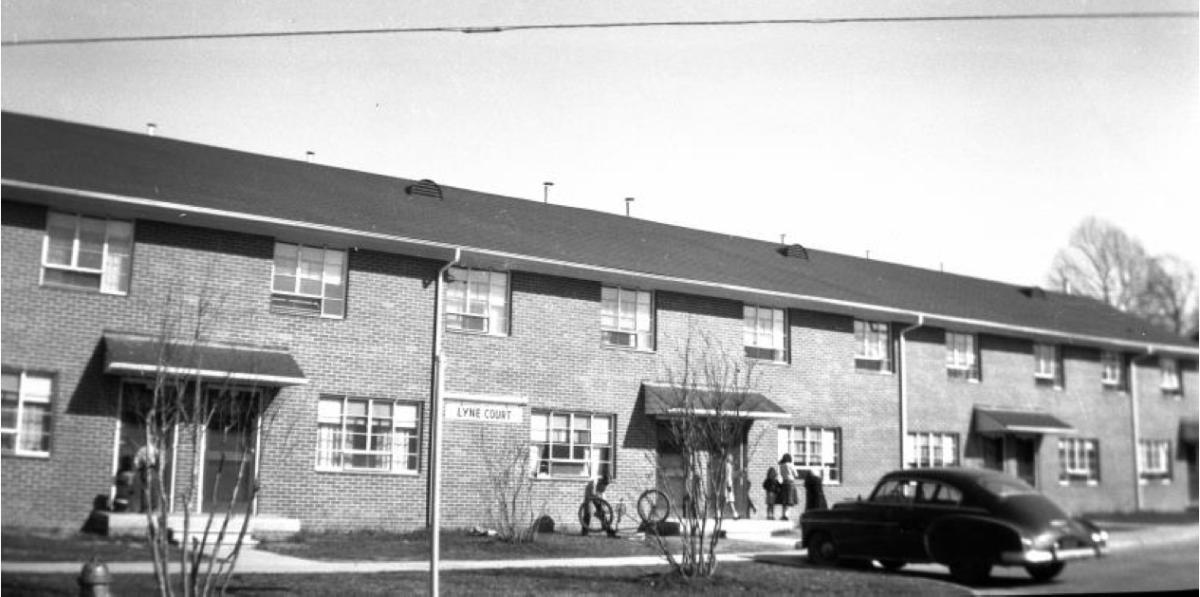
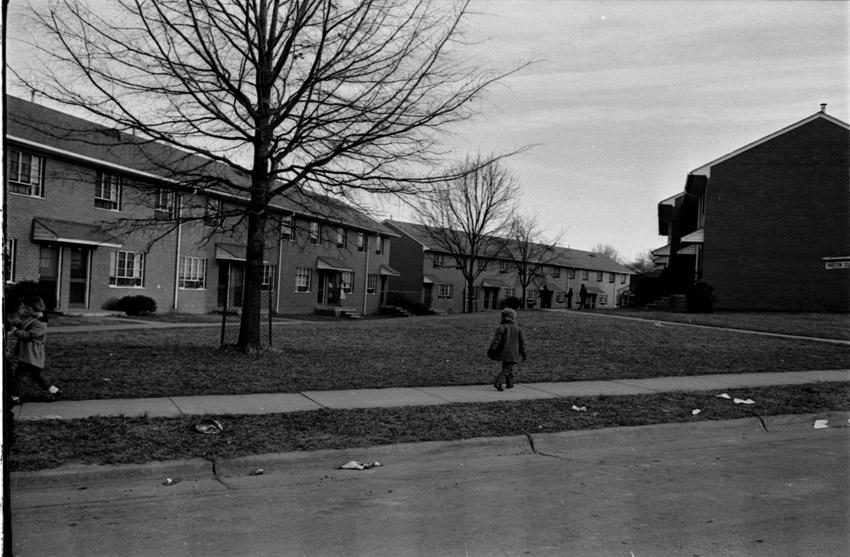
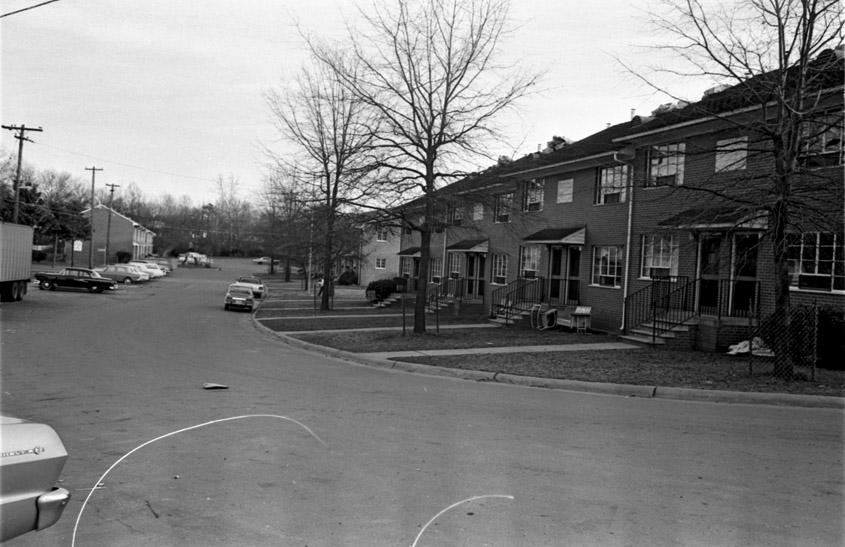
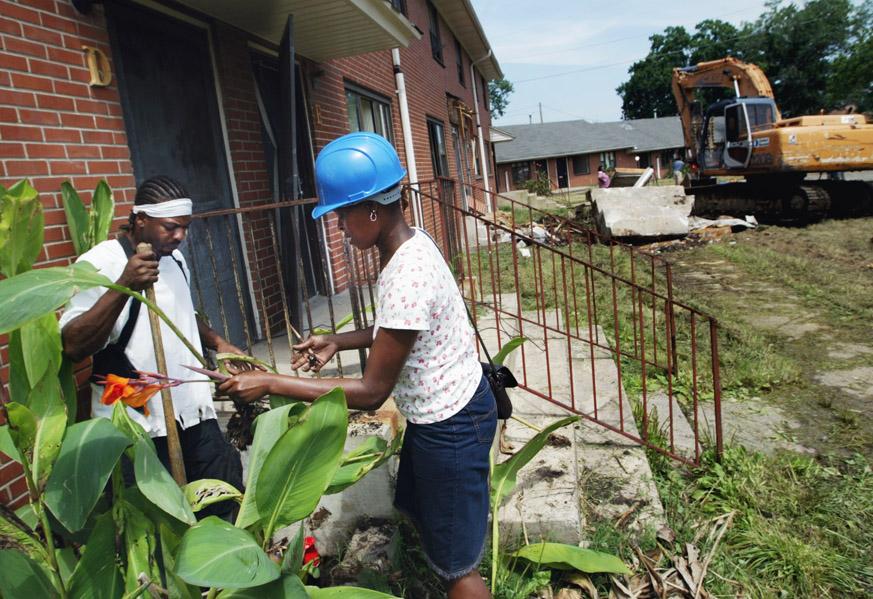
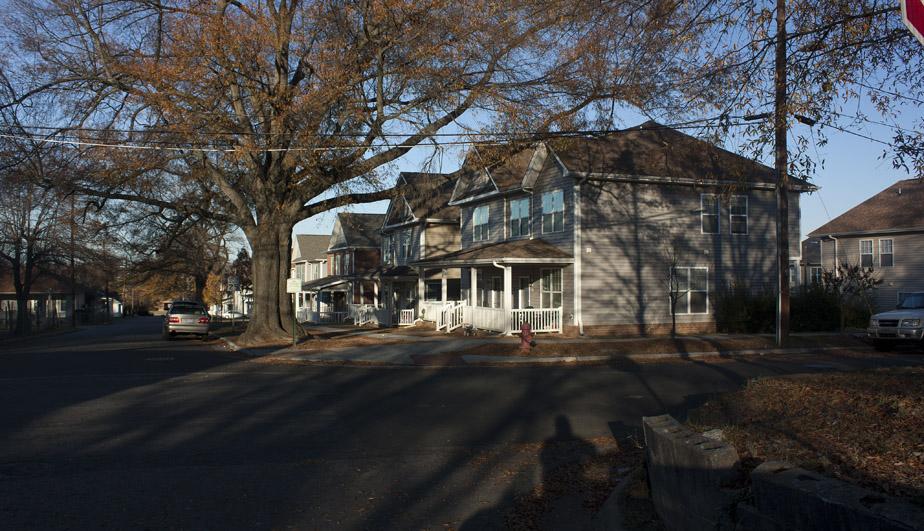

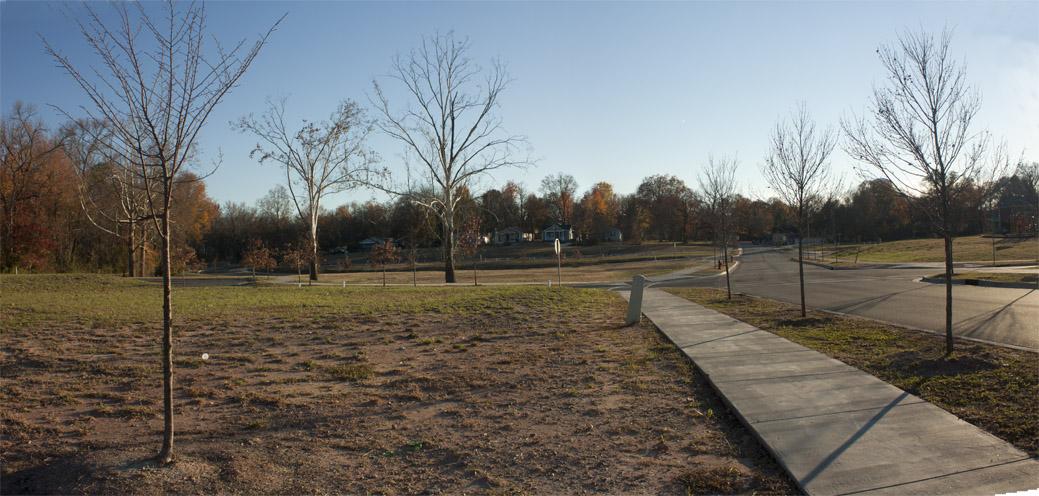
Comments
Submitted by Natalie (not verified) on Thu, 12/2/2010 - 1:54pm
I wonder when the time will come for the community between Liberty and Main St.
Submitted by Steve R (not verified) on Thu, 12/2/2010 - 7:18pm
'few gardens' is an appropriate name!
thanks for yet another great post!
Submitted by DHA Communications (not verified) on Thu, 12/2/2010 - 9:43pm
Congratulations on this wonderful blog. Endangered Durham is essential reading to those of us who care about history and preservation.
As to your comment that DHA is "accountable to no one," I must take issue with that. I think, for example, that the City Council would be quite surprised to hear that and likewise HUD officials have been, in my experience, far from helpless in driving our compliance with Federal Regulations. We take our transparency and accountability very seriously at DHA and so do our regulators.
We've certainly fallen short at times, but "accountable to no one" is simply inaccurate.
Again, many thanks for your work on preserving the story of Durham -- all of it.
Jean Bolduc
Director, Corporate Communications
Durham Housing Authority
p.s. the HOPE VI website that you linked to is controlled by TCB, not the Housing Authority. Ours is http://durhamhousingauthority.org and it's overdue for an update on our development plans.
Submitted by Gary (not verified) on Thu, 12/2/2010 - 10:09pm
Jean
Thanks for your compliment, but while "accountable to no one" may be hyperbole due to frustration, the overall point is that DHA has insufficient accountability.
Who is DHA accountable to for the abandoned historic structures at 1007 Morning Glory and 1010 Worth St.? Or the many vacant lots that it owns in this area? Can the city repair these properties and then lien them, as they would for a private entity? How is DHA being penalized/held accountable for allowing contributing structures in a National Register Historic District to rot?
Who is holding DHA accountable for the impact on the neighborhood of a lack of owner-occupied housing on Angier Ave.?
I'm picking on DHA in particular, but generally, my argument is that the entire Housing Authority structure, in any city, is flawed due to the fact that the accountability is only to regional Federal offices, not local elected officials. The regional Federal employees don't live next to the problem, and don't get booted out of office if the vacant house isn't boarded up. Again, there are plenty of good people in the system, but it is a flawed system. I can write to my Senator and Congressperson about these matters (and I have about these houses,) but the issues are simply too small (evidently) to have an impact.
GK
Submitted by John Schelp (not verified) on Fri, 12/3/2010 - 12:48pm
Songwriter John D. Loudermilk told me the best place he ever lived as a kid was Few Gardens.
Loudermilk's hit song, Tobacco Road, was based on his experience delivering telegrams to nearby houses on Morven's Alley (aka Marvin's Alley).
More... http://www.owdna.org/loudermilkarticle.htm
Submitted by DHA Communications (not verified) on Fri, 12/3/2010 - 4:00pm
Gary,
These are fair points. Looking broadly at the accountability question, though ... the City Council and the Mayor appoints our Board of Commissioners and they are certainly accountable (at the ballot box) for their choices as they are for any other official action. A City Council member has a liaison seat on our Board. Our monthly Board meetings are open to the public and there is a public comment opportunity at the beginning of each meeting. In my book, that's direct accountability and transparency for the public. Just my opninon, but I don't think that there has to be an iron fist of enforcement (hire/fire on the spot) to meet a standard of accountability to the taxpayers.
Finally, I think you know that we don't have code enforcement responsiblities. That's the City's realm. Overall, I suspect that you and I agree there should be far less space between any city government and the local housing authority. Where there once was a sense "two states," we at DHA view our partnership with the City of Durham as of the highest strategic priority. This is a lot of change to go through, but as this situation indicates, it's very necessary.
All best regards,
Jean Bolduc
Submitted by Gary (not verified) on Fri, 12/3/2010 - 4:11pm
Jean
Thanks for your reply; I do know that DHA does not have code enforcement responsibilities - the properties I mention are all DHA-owned, and I don't know that DHA has code-compliance responsibilities that private companies or citizens have - does the city's code enforcement team have the legal authority to take action against DHA - file a lis pendens, etc. for DHA's failure to meet city minimum housing code? Or as a Federal agency, does its authority supersede that of the city, delegated by the state? I believe that is the case, which means that DHA is outside of the accountability structure enforced by the city upon other property owners.
If I'm mistaken, I'll happily be corrected.
Thanks
GK
Submitted by John Martin (not verified) on Fri, 12/3/2010 - 8:10pm
Jean,
Thanks for taking time to engage with us on these issues. Let me be very specific, though, about what I mean by accountability: 1010 Worth St.
As Gary said, this house is boarded up and nothing is being done with it, even though DHA has owned it for more than four years. The house is a magnet for vagrants. Last summer, when some Duke student volunteers helped pick up trash in the neighborhood, they literally picked up dozens of liquor bottles and malt liquor containers from this lot alone.
I live on the street behind this house and next to another DHA-owned boarded-up house. If DHA does not have plans for 1010 Worth, I'll buy the house for cash. If you don't want to sell it, what are you going to do with it and when?
Giving straight answers to these questions is accountability.
Submitted by John Schelp (not verified) on Sun, 12/5/2010 - 12:32am
It is a fair question to ask DHA of its plans for boarded up places like 1010 Worth. I've been to John's house. He's transformed his corner in GB and is working with others to build community. (Just as he volunteered in West Durham and saved another house from going to the landfill).
Hopefully, good things are happening with houses like 1010 Worth. It would help neighbors to know when and how DHA will fix its properties. With appreciation.
Submitted by DHA Communications (not verified) on Mon, 12/6/2010 - 3:33pm
With the approval (at last) this past July of DHA's revised HOPE VI revitalization plan, we can now go forward with rehab on the Worth Street property ... once funds are available. DHA faces the same issue with locating development dollars as other nonprofits. That said, help is on the way!
Jean Bolduc
DHA Communications
Submitted by DHA Communications (not verified) on Mon, 12/6/2010 - 3:44pm
And a Post Script to the issue of code enforcement ... Gary asked if DHA is exempted from these requirement due to our being "a federal agency." DHA is a federally funded agency, but we are not an agency of the federal government. Our properties are subject to the same code requirements as those privately owned. Remember, though, that the City of Durham has its name on the HOPE VI project as well. That federal regulatory authority would seem to explain the problem we're talking about.
As much as we all want to redevelop that property, DHA has been unable to do anything with it until the plan to close out the HOPE VI was approved by HUD (this July). With that now in place, we can look to move forward, as I indicated ... once the development dollars are avalable.
Jean Bolduc
DHA Communications
Submitted by John Martin (not verified) on Mon, 12/6/2010 - 5:26pm
Jean,
I'm afraid your answers raise more questions.
1. "DHA faces the same issue with locating development dollars as other nonprofits." DHA bought 1010 Worth St. four years ago. Isn't that enough time to raise development dollars for a small single-family house? If you can't reasonably raise the money in four years, when do you think you will raise it?
2. What kind of development does DHA intend to do? Does it plan to rent the house? Does it plan to eventually sell it? How does having a single house on an otherwise owner-occupied block make sense for DHA, particularly since you normally operate large multi-unit projects?
3. There are buyers out there who will begin restoring the house RIGHT NOW. Why doesn't DHA sell the house and focus its attention on other projects? There are all those empty lots at Few Gardens where single-family houses were supposed to be built. When is that going to happen?
I am well aware that the solution to many of these issues is being impeded by the impenetrable and unresponsive bureaucracy of HUD. But I wish DHA would take that into consideration before it ties up historic houses for years.
Submitted by DHA Communications (not verified) on Mon, 12/6/2010 - 7:10pm
Hi John,
I appreciate the conversation ... I just wish I had more definitive answers.
A problem we're faced with is that this property is part of the HOPE VI redevelopment plan and cannot be sold off as you suggest, though I certainly understand the merits of that suggestion. As I'm sure you're aware, HOPE VI was a program that envisioned a base grant that would be used to leverge redevelopment around it. As I understand Durham's history in that context there were many things that went wrong in the earlier years of the project (this predates my service at DHA).
Beyond that foundation, the credit market was very different when DHA bought those properties four years ago and DHA's designation as a "troubled" agency (now corrected) made it nearly impossible to budge. Surely you understand that DHA did not intend to "tie up historic houses for years" when the agency purchased this particular property.
So ... DHA's plans are to rehab the house. Whether or not it will be sold, I don't know and I'm not sure that's something we've determined yet. Please be advised that our Board's Development Committee meets on the second Wednesday of every months at 12:00 noon and these meetings are open to the public. Perhaps you'd consider attending.
Best regards,
Jean Bolduc
DHA Communications
Submitted by John Martin (not verified) on Mon, 12/6/2010 - 9:47pm
Jean,
To summarize: After four years of ownership, DHA does not know what it intends to do with 1010 Worth St, when it will do it, or where the funds will come from. Is that a fair assessment?
John
Submitted by DHA Communications (not verified) on Mon, 12/6/2010 - 10:03pm
No, it's not a fair assessment.
After 3 1/2 years of ownership, DHA received regulatory approval of a redevelopment plan and intends to rehab that house. The next step is funding, which we certainly hope will become available in 2011.
The notion that we could have received funding approval while waiting for regulatory approval is something I can't address, but it doesn't seem to follow logically.
-Jean Bolduc
DHA Communications
Submitted by John Martin (not verified) on Tue, 12/7/2010 - 2:28pm
"Surely you understand that DHA did not intend to "tie up historic houses for years" when the agency purchased this particular property."
I do understand that, and I don't doubt for a moment that the people who work for DHA have the best of intentions. However, the house HAS been tied up for four years, and houses cannot sit vacant for years without suffering further damage. Can we at least agree that its restoration should be a very pressing priority for DHA in 2011?
Submitted by DHA Communications (not verified) on Tue, 12/7/2010 - 8:44pm
I'm sure we agree that's it's very important to act as soon as possible, yes.
Jean Bolduc
DHA Communications
Submitted by Rick Barbour (not verified) on Sun, 3/25/2012 - 2:12pm
I lived in Few Gardens as a child (age 3 to 9) then would visit my grandmother who was also living there untill I was 16 or 17 ..( maybe 1955 - 1969 ) . I remember a neighborhood where people borrowed a cup of flour, sugar, mabey some eggs until they went shopping (pay-day) then would take it back. kids playing ,riding trikes ,wagons etc. older kids baskettball , baseball at long meadow or swimming in the pool . Every kid had a cap pistol (but never any caps) and a constant round of cops & robbers - cowboys & indians would range between the buildings until someones mom ( driven crazy by the noise) would call in their kids and tell everybody else to go home. The moms had an informal network where if they somebody they did'nt know or a kid that looked out of place they were on the phone or out in the yard asking questions, ( phone call,, hey Leola you see those boys walking down the sidewalk toward you , look at that baskettball they have and see whos name is on it ) It was a time & place where a kid would give up the ball to a Mom if the names did'nt match (LOL) .....Street preachers or the Salvation Army would set up down by the office For some music and preaching . Ice creame trucks Bible school parades or , an ocassional mule pulling a wagon were all part of the landscape. We walked to Edgemont school, the stores (Grandma's ) on Blackwell st run by two elderly ladies, Griffins Later Inscoes in morning glory corner or another run by a blind man out of his house on the other end of morning Glory. Halloween was a mixed bag...older kids in groups shaking down younger kids for candy, people giving out a handfull of popcorn (literally putting a handfull of popcorn losse in yor brown paper grocery sack) among the tootsie rolls ,mary janes & suckers . apples sometimes ! There was no A|C so summer nights if a neighbor was having a fight with a spouse everybody heard it! Everybody knew each others circumstances and worked around it ( don't play over near Mr beattys -he works the nite shift or stay away from Miss Hicks bldg. she's been sick etc) I liked to visit with some of my neighbors sit on the steps (never go in the house without asking Mom) An elderly WWI & II vet who would show me his souviners and tell storys about the places he had seen. some of my friends folks sitting outside smoking & taking to other neighbors as they passed by. All in all not that bad ( but I was a kid ?)...
Submitted by NannyLas on Tue, 9/27/2016 - 3:55pm
My Great Grandma lived here in 1955 also my Grandma.
Add new comment
Log in or register to post comments.